Interview: DJ Muro
From hip hop to funk, rare groove to disco, and reggae to world music, DJ Muro is a fanatical record collector worthy of the title “King of Diggin’.” A pioneer who has helmed the mic from the earliest incarnation of Japanese hip hop – as part of the groups Krush Posse and Microphone Pager – he’s perhaps best known overseas through his collaborations with Lord Finesse and O.C. Muro is more than just an MC, though. He’s a producer, a fashion icon who runs his own clothing label and store, and an in-demand DJ. In order to trace the footsteps of this truly unique figure, we visited Muro at Digot, his store in Harajuku, to hear about his career thus far.
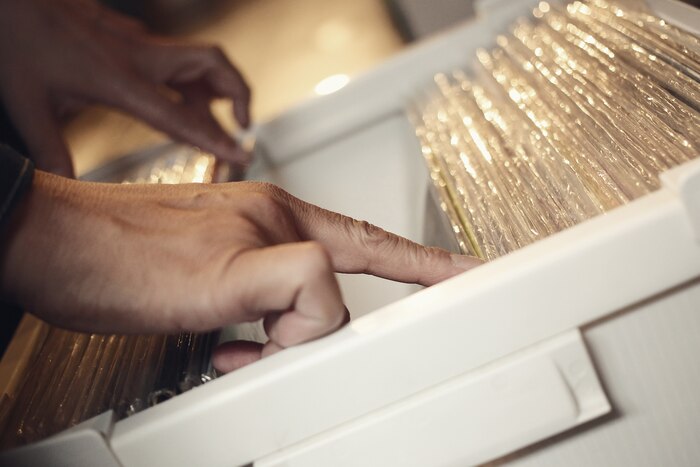
What kind of music did you first really get into?
It started with listening to anime theme tunes on flexi discs. Both my parents worked at a petrol station, and they couldn’t spend much time with me, so I used to listen to these flexi discs that came with children’s books. The kind you played on these tiny record players and they’d read out the story for you, and make a “pong” sound when you were supposed to turn to the next page. That was how I first discovered records.
What were the circumstances that led you to discover hip hop?
I started trying to go to discos around the time I was in middle school, but it was hard to get in because they had a dress code. But I discovered that the local roller rink had this disco-orientated selection. There I got to hear things like Afrika Bambaataa and Grandmaster Flash. At the time there were rental record stores, so I used to rent out records from there and listened to the cassette tapes I made out of them. The first time I tried something you’d call close to DJing was when I was in high school. I got hold of what used to be called a modular stereo. It was basically a component stereo that had two cassette decks underneath the record player, and one day I realized I could mix the sounds when I played them both at the same time. That’s when I thought “I can actually join them up!” The first time I actually DJed was at a school festival, nobody asked me to do it, but I just turned up with a stack of tapes.
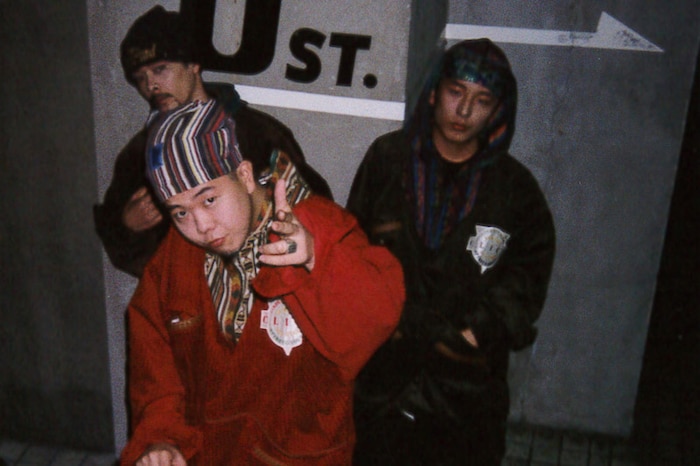
I saw people like DJ Krush and Crazy A, generator in hand, spinning records on turntables and breakdancing and everything. I was really shocked. My first thought was, “Are these guys Japanese?”
Was it around this time that you met DJ Krush on Harajuku’s pedestrian paradise (Hokoten)?
When I was in high school it was the heyday of heavy metal, and so nobody around me was listening to black music. That was what made it so nice actually. I guess you could say I had a warped mind since I was in elementary school. I hated being the same as the others. But at some point somebody told me, “I saw some people doing something similar to you on Hokoten” so I headed there and found people like DJ Krush and Crazy A, generator in hand, spinning records on turntables and breakdancing and everything. I was really shocked. My first thought was, “Are these guys Japanese?”
In those days, Hokoten was a blend of different cultures, from the Takenoko-zoku (literally translated as "Bamboo shoot tribe") to the rock & rollers, but I was really surprised to discover these kinds of guys in amongst them. After the first two or three weeks that I started going to watch them, Krush came over to me and said “You should come and visit us.” After a while, I became their record carrier, tagging along from venue to venue. Well, saying venue, Krush wasn’t playing clubs and discos just yet, so it was more like playing alongside street performers or at openings of department stores. I actually wanted to become a DJ, but at the time DJing was becoming trendy with the DMC (World DJ Championship) coming to Japan. So Krush told me, “There are plenty of DJs out there, so why don’t you try rapping?” That’s how I started out rapping.
After Krush Posse disbanded, you formed the group Microphone Pager with Twigy, P.H.Fron, Masao and DJ Go.
Krush was, even then, ahead of his time. What we really wanted to do was make the New York sound, but Krush would tell us things like, “I tried this, look what kind of sound came out.” He was doing really experimental stuff, almost like a scientist. I guess I couldn’t keep up with that. [laughs] At that time, all I wanted to do was make a sincere recreation of the American sound. I have to say though, year after year, I understand more what Krush was up to, and especially recently, find myself being amazed by him even more. I’m reminded that he actually had this kind of mindset already at the time.
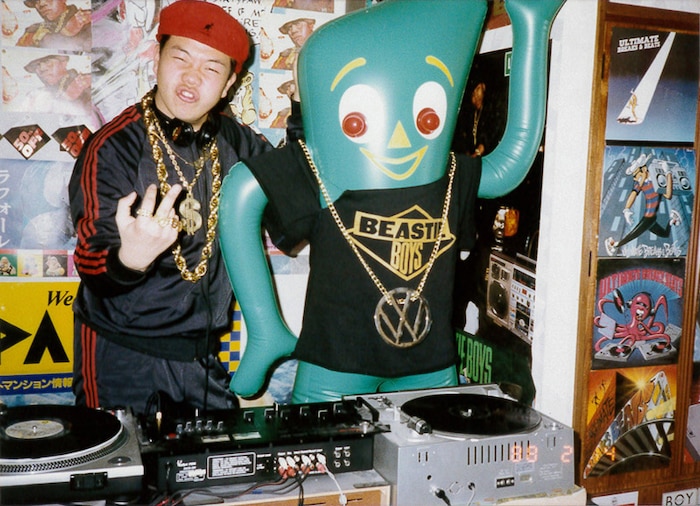
So I guess Microphone Pager was a group that embodied the hip hop you wanted to do at this time. Moving into the ’90s, while releasing music as Microphone Pager, you also began releasing solo records as MURO. What was your first release?
Well, the first record I released was with Krush Posse in 1990, it was called “Yellow Rap Culture In Your House.” Four sets of artists were on the release: Home Base, Honey Bomb, Gutch Gee and us. We contributed the track “K.P.”
What kind of reaction did you get?
Around that time, there weren’t many rappers who were of a similar type to me. Like EPMD or Rakim, I was into the type of rap delivered with a kind of low muttering, mumbling voice. I was concerned more with form, rather than content. Krush was also the same. We also wrote lyrics together.
In 1996, as MURO, you performed live at “THUMPIN’ CAMP,” an event held at Hibiya Open-Air Concert Hall. Regarded as the most significant event of its kind in the history of Japanese hip hop, many artists who were leading the Japanese hip hop scene at the time such as Rhymester, King Ghidorah, Lamp Eye, Buddha Brand, Shakkazombie, and Soul Scream all descended on the festival. Did you think it would turn out be such a historical event?
No, not at all. [laughs] To be honest, I didn’t think much of it until I went out on stage. It wasn’t the type of affair where all the performers knew each other and were a tight-knit group, I actually didn’t even go to the rehearsal. [laughs] When I think about it now, it was pretty unprofessional of me. It felt like any other event I performed at before. But when I actually made my way on stage, the size of the crowd and the vibe…It was raining, but so many people had turned up, and I realized that the scene had reached a certain point, and I have to say I couldn’t contain my excitement.
You spilled those famous words, “I was waiting for this kind of scene!”
Yeah. [laughs] I think my thoughts in that moment naturally spilled out.
If I liken Marley Marl’s productions to cooking, his sampling brings out the best in the ingredients.
When you look back at the Japanese hip hop of that time, do you feel like the scene was on the rise?
I think so. You noticed the shift in it when you looked at the crowd in attendance at shows of international artists. When Run-DMC came to Japan and performed at the NHK hall, there were people who came in sneakers without the laces; when LL Cool J performed in the car park of the LOFT in Shibuya, they were in gold chains and matching top-and-bottom tracksuits. At the same time, clothing labels started to appear in parallel with this.
And when Public Enemy came over, I got the impression there was an even bigger crowd. It felt like there was a slightly different, broader crowd compared to the Run-DMC and LL shows. Then when the Beastie Boys were here, there’d be skaters with their boards at the venue as well, so you could see this constant growth. When it looked as though things were calming down, De La Soul popped up, and it opened it up to an even wider audience. Up to that point, there was probably a kind of intimidating image to the scene. It might have looked uninviting to the outside general public looking in. But even those people began taking an interest with likes of De La Soul and Native Tongues emerging. It was probably the first introduction to hip hop for a lot of people, especially in Japan.
Which artists were particularly influential to you?
I really loved Rakim. Cold Chillin' [Records] was huge influence on me. If I liken Marley Marl’s productions to cooking, his sampling brings out the best in the ingredients. When I recently moved out of my old place, I sold a ton of records, but I kept plenty of records from this era. The Juice Crew Allstars track “Symphony,” and the music video for it, ranks as my all-time favorite. On it, Kool G Rap, Craig G, Masta Ace and Big Daddy Kane are having a mic relay and I’ve lost count of how many times I’ve imitated it. Wearing the cowboy outfit and everything. [laughs]
Were you also producing tracks from the beginning?
Yes. From quite early on in my career I was making tracks of my own together with a DJ. I’d bring some records, and request a part I wanted a loop made out of, and they’d fiddle with it. That’s how I started learning.
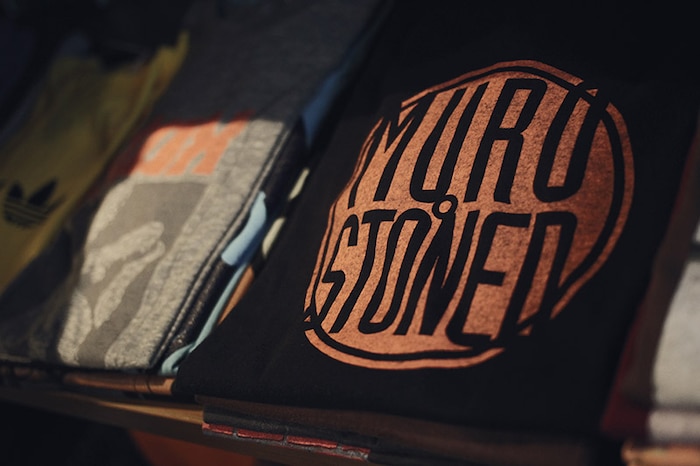
Were you doing this in parallel with your DJ activities?
Exactly. In those days, discos and clubs meant totally different things. When you thought of discos, you'd think of Roppongi: bouncers in black standing at the entrance, strict dress code, that sort of thing. The music policy was disco and black contemporary, no chance of hearing New Wave or reggae there. But in clubs, on the other hand, it was everything and anything. Krush began his residency, from its opening, at Roppongi’s Droopy Drawers. Fresh from just getting my driving license, I would drive Krush to the club. I was just enjoying being able to drive anyway. I'd bring him to Droopy Drawers, and sometimes have a go on the mic.
There was also this small club called ZOO in Shimokitazawa, where Tokyo No.1 Soul Set and the reggae crowd used to play regularly. I’d also go there and MC sometimes, enjoy the atmosphere for a bit, then back to pick up Krush again. Those were my Saturdays. Soaking up the best of both venues really. At some point somebody asked me, “Do you want to try being a DJ?” So I thought it might be interesting to try the opposite - to play a disco selection in the club, and vice versa. I think people thought “This kid is weird,” but actually, I think that’s why I was treated so well by everyone.
Your King Of Diggin’ series is some of the most important work you’ve done. When did you start working on them?
The ones I took with me to New York were just dubbed, so if I count those that weren’t officially released, I think it probably started from the early ’90s. There were very few themed mixes around. There were, for example, old-school mixes by Kid Capri or mixes that joined together Jackson 5 or James Brown and so on, but I noticed that there weren’t any richer mixes, the type that would mix up everything from fusion to jazz.
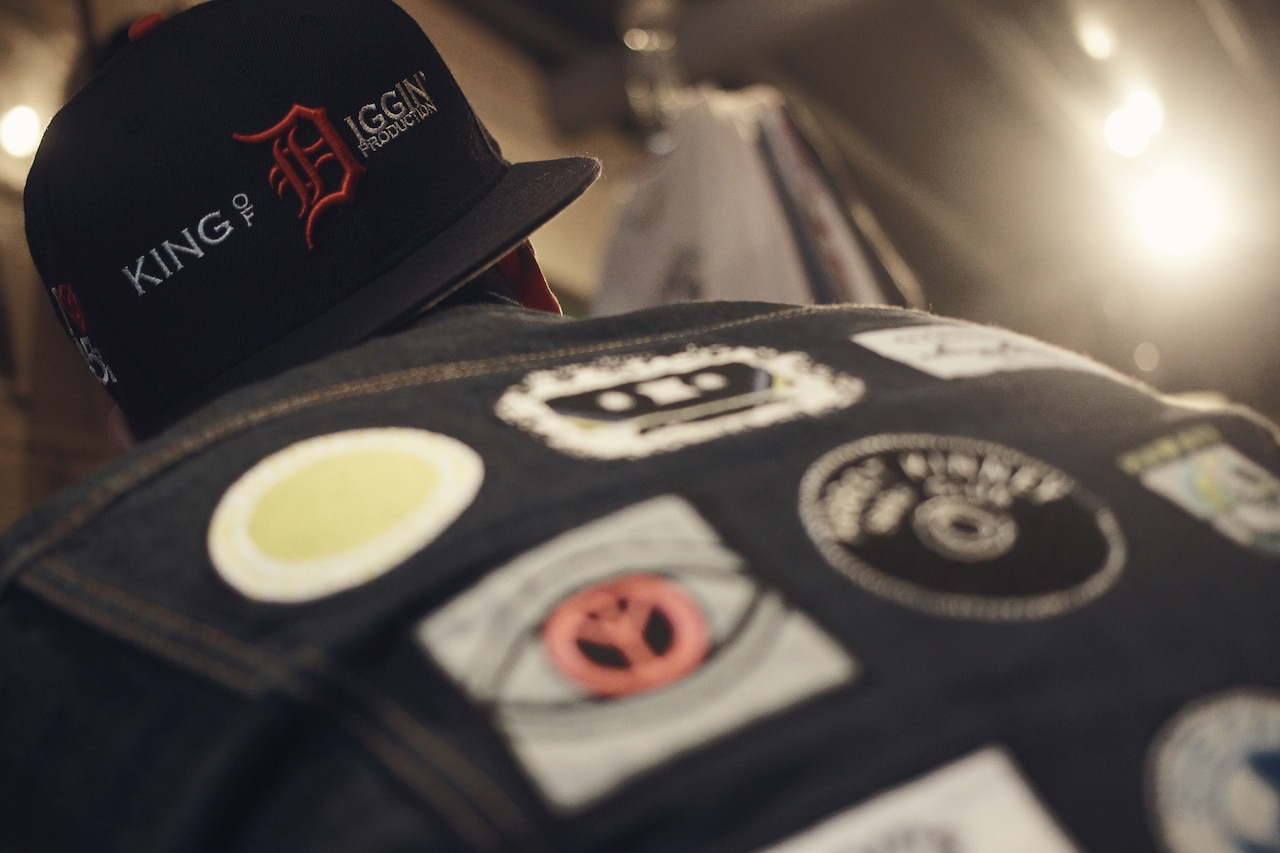
The title King Of Diggin’ itself is quite audacious. Did you choose this yourself?
A woman who was the manager of Microphone Pager at the time chose it. I have to say, I did feel the weight of the crown back then. [laughs] If you’re calling yourself a king, you’d better have everything up your sleeve, if you like. I spent those days just practicing the whole time. No meal times for me.
You obviously worked hard to live up to the title. Was there anything you were conscious of as a Japanese person in Japan making hip hop, which was essentially a part of American street culture? For example, I recall that many of the titles of your early '90s releases were made up of four-lettered kanji’s.
My grandfather was a Shinto priest. He’d wake up and by 4:30 AM I began to hear his chants, with all these rhyming words.
There was for sure. My grandfather was a Kannushi [a Shinto priest]. He’d wake up at 2:30 AM and pour water over himself. [laughs] We lived together, just the two of us, so by 4:30 AM I began to hear his chants, with all these rhyming words. Also, he often used four-lettered Kanji idioms as metaphors. I was just really impressed by him. I leaned that there are many ways of capturing the Japanese language; it’s really very deep.
I used a lot of Kanji during the Microphone Pager days. I was conscious of the Japanese element when it came to my rapping as well, especially when I started to travel abroad. I started to think more about what Japanese originality was, and what I was able to communicate to the other side. My goal at that point was hoping that the Japanese language would spread around the world, enough that even an English-speaking person would want to rap in Japanese. I was conscious of things like trying to use words that non-Japanese people might find interesting in some way.
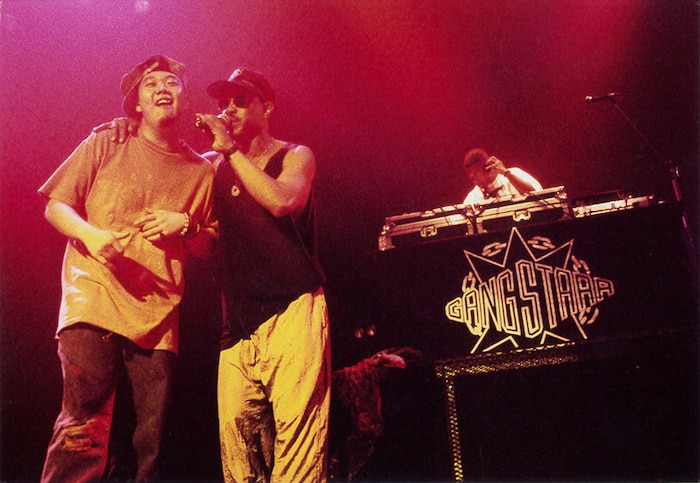
Your rap is Japanese and not bilingual, but you also make tracks with the guys from D.I.T.C. Perhaps American audiences accepted you because you were making a concerted effort to rap with words that sounded attractive to the ear, even to those who didn’t understand the meaning of the words.
When I started out, most Japanese raps were in a very basic 5,7,5 haiku rhythm. I have much respect for those artists now, but at the time it just didn’t sound cool to me. It was a reminder of the importance of how things sounded. Even if it was in English, if it didn't sound good, I just wouldn't listen to it. First impressions are, of course, important. I would say I was concerned with how things sound more so than the average person.
You produced a book dedicated to Japanese 7-inch cover art, entitled 45RPM COVER MUSEUM.
I loved collecting the artwork of 7-inches and kept them in a file. An editor saw this and found it interesting. It probably looks even more interesting to somebody outside of Japan, as they look very distinctly Japanese. By publishing the book, I wanted to make people aware that a thriving culture attempting to spread black music in Japan has existed since the ’70s. There’s been an amazing reaction to the book internationally; everyone seems pleased when they’re handed a copy. All the Japanese lettering, including katakana, was all drawn by hand as there were no font sets at the time. There are also totally outrageous Japanese titles, where you say, “Is this really how you translate this?” [laughs] But that’s all part of the charm.
How many records do you own at the moment?
I got rid of a lot of records when I moved recently, so it’s downsized from four rooms to two. I don’t know how many there are though.
I like how, for you, records are measured not in numbers, but rooms.
Yeah. [laughs] I used to host a regular radio show on a station called J WAVE, and I was making one mix per week for that, so I almost have to have a mix in progress constantly to feel relaxed. I’m basically making something constantly. By making these, I get to listen back properly to the tracks, and you can also discover two bars of something nobody else has sampled. The act of “discovering” is something of an illness - you just can’t stop. So many of the record stores have listening posts now, and I just love going to record stores where you can sit and listen to as many records as you wish, on a quiet day at a quiet time, trying find an undiscovered two or four bars, one record per day.
I’d say you’re a natural born digger.
I was happy to learn that digging is becoming an established category, or element, within hip hop. A while back, an artist called Stezo made a track with a Skull Snaps drum break called “It’s My Turn." When I was taking part in Park Jam in New York in 2012, Stezo came over to introduce Skull Snaps to me as the “the artist who made the sample” and I replied, “I know! I even have the record with me right now.” They wanted me to give a comment for a documentary about sampling they were making, the first question of which was, “In hip hop, there is the MC, the DJ, breakdancing and graffiti. Would you say diggin’ would come next on the list?” I thought, “Has it finally reached this point?” It brought a tear to my eye. I was so happy, because all my work has been about trying to spread sampling and digging culture to as many people as possible and, on the way, presenting it in an accessible form to the Japanese audience.
In the past you ran the store SAVAGE!, and now Digot in Harajuku. You stock a line of original brand clothing, secondhand clothing, accessories, records, as well as your mix CDs. What were the circumstances behind opening the store?
It could have been anything; I just wanted to make a “platform” for something. I felt there was a lack of spaces, especially after the 3.11 earthquake. There are fewer places these days that you can just go on a whim and know that somebody would be there, or something was always happening. There are no clubs or events that serve this purpose, and I wanted to make a place like this. It’s great; all sorts of people stop by, along with many regulars.
Lastly, when you look back at your career up to this point, what is your proudest moment?
One of the peaks has to be when I played at my first Park Jam in New York in 2010. What topped it off was Lord Finesse introducing me on the mic before I came on. He started by explaining our history, “I met this dude back in '92, '93 in Japan. He gave me a mixtape called King Of Diggin’. I looked at him like, how is HE the king of diggin’?” I was so moved, tears just wouldn’t stop flowing. That moment was a graduation of sorts for me. I felt I had the license to do whatever I wanted from that point on. He understood me. Even though I couldn’t communicate properly in English, we understood each other.
Header image © Tsuneo Koga
